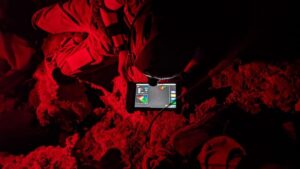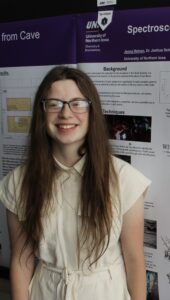 Life in space has been a question plaguing science for many decades. While onsite research is difficult to conduct, due to both the necessary expense and preparation behind it, there are places on Earth which can be used as models to study space’s unique conditions and even its potential for life. In particular, my research advisor, Dr.Joshua Sebree, and I, as well as a group of other researchers at the University of Northern Iowa, have been using Wind Cave National Park as an analog for space, especially in studying the Icy moons of Jupiter and Saturn. With its moderate temperatures (constant 55℉) and high humidity (99%), the environment of the cave, especially around its subterranean lakes, highly resemble the atmospheres of these aforementioned moons.
Life in space has been a question plaguing science for many decades. While onsite research is difficult to conduct, due to both the necessary expense and preparation behind it, there are places on Earth which can be used as models to study space’s unique conditions and even its potential for life. In particular, my research advisor, Dr.Joshua Sebree, and I, as well as a group of other researchers at the University of Northern Iowa, have been using Wind Cave National Park as an analog for space, especially in studying the Icy moons of Jupiter and Saturn. With its moderate temperatures (constant 55℉) and high humidity (99%), the environment of the cave, especially around its subterranean lakes, highly resemble the atmospheres of these aforementioned moons.
However, one caveat of studying this cave is that its levels of human contamination are relatively low and many of its crystalline features cannot be removed without permanently altering the cave’s makeup. Because of this, my research specifically focuses on using spectroscopic studies, mainly UV-VIS and XRF spectroscopy, to study and trace the organic and mineral makeup of this cave, allowing us better understand the certain conditions and possible extreme life present. Also, within the lab setting, replicative studies and new methods are constantly being developed, allowing us to further our work even on the surface. From there, along with the rest of the team, we hope to build a comprehensive understanding of this cave’s conditions and life forms which can then be applied to extraterrestrial atmospheres.

